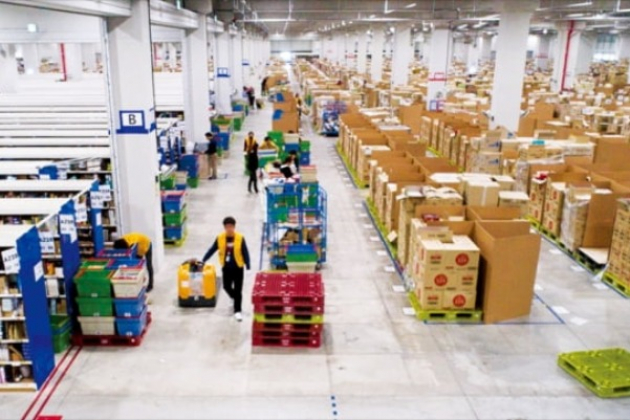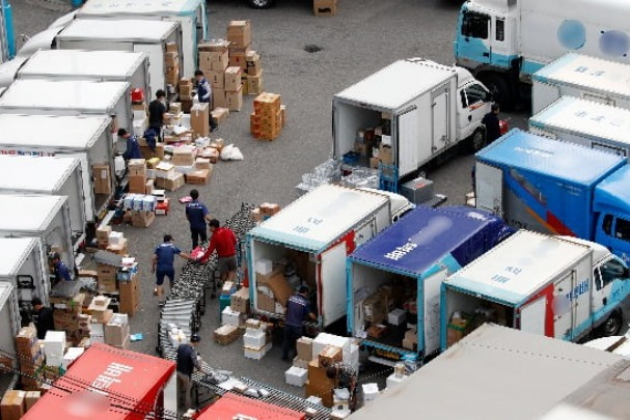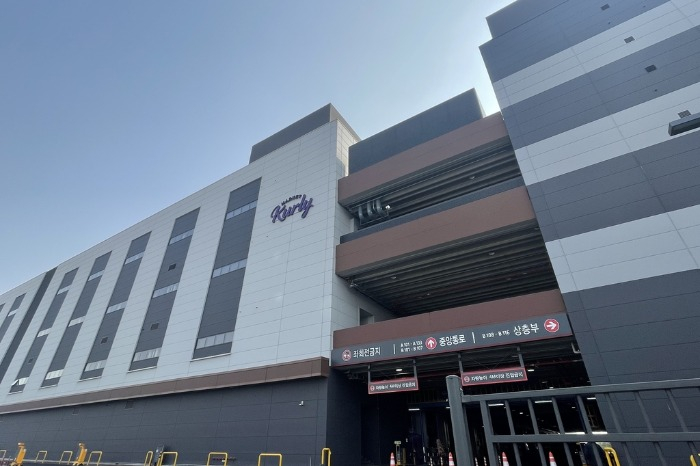Korean warehouse project financing on brink of debt crisis
Increased construction costs, oversupply lower the value of logistics centers; financial services firms see soaring PF default rates
By Sep 21, 2022 (Gmt+09:00)
LG Chem to sell water filter business to Glenwood PE for $692 million


KT&G eyes overseas M&A after rejecting activist fund's offer


Kyobo Life poised to buy Japan’s SBI Group-owned savings bank


StockX in merger talks with Naver’s online reseller Kream


Meritz backs half of ex-manager’s $210 mn hedge fund



Warehouse development projects in South Korea, which boomed amid COVID-19, are facing challenges such as suspension of construction projects and bankruptcy risk due to rising interest rates and oversupply of such properties.
Project financing (PF) is sensitive to economic fluctuations and thus has high risk. As PF for logistics centers has soared, market watchers are concerned that an increasing number of distressed projects will affect Korea's entire financial market.
Of 55 logistics centers to be built in Korea this year, each with a total floor area of 33,000 square meters or more, 15 centers are facing problems such as construction delays, real estate services firm Jones Lang LaSalle Korea’s report said on Tuesday. The 15 warehouses’ aggregate floor area amounts to 1.42 million square meters, JLL added.
Industry insiders forecast this will lead to at least 1.9 trillion won ($1.4 billion) in distressed debts, given that project loans for building logistics centers generally range from 3.5 million won to 4.5 million won per 3.3 square meters or one pyeong, the Korean unit of area measurement.
About 20 logistics centers, each with less than 33,000 square meters of floor area, have suspended construction with their combined loan amount in the trillions of won, The Korea Economic Daily understood.
CONSTRUCTION COSTS RISE, ADDITIONAL LOANS SHRINK
Logistics centers gained investors’ attention thanks to growing demand amid the pandemic and the relatively easy launch of projects with only 10% down payment of the land sale contract needed.
But many of the properties have become distressed assets as increased raw material prices raised construction costs by about 40% and financial firms cut back on additional loans due to interest rate hikes.
In general, investors in logistics centers sell off assets after securing about 80% of the total tenants. However, an increasing number of local warehouses are facing difficulty finding tenants as the assets have been oversupplied for the past few years.
The oversupply issues became more serious as some e-commerce giants, such as Coupang Inc. and Kurly Inc., have recently slowed the expansion of their logistics facilities, market sources said.

RENT, LAND PREMIUMS DROP IN 2022
The average rent of Seoul metropolitan area-based warehouses is 45,000 won per 3.3 square meters, down 25% from last year, according to industry sources on Tuesday. As lease prices are commensurate with sales prices, a lot of warehouse asset prices are also expected to drop this year.
More real estate developers are extending rent-free periods for tenants. As of last year, the rent-free periods for low-temperature warehouses ranged from 15 days to a month per year; it has recently increased to two months.
Until recently, developers increasingly sold off their development licenses for logistics centers in the middle of construction. In doing so, they could earn huge profits from the land price, which had gained a premium with land development permits.
But the premiums’ values have recently plunged amid a slowdown in the warehouse development businesses. The prices of land which already recieved development permits were four times more than the prices of land without the permits last year; they are up just two to three times these days, industry sources said.

PRESSURED BY INCREASING DEFAULTS
Financial firms in Korea are concerned as they have aggressively expanded their real estate PF services in previous years thanks to rising real estate prices and low interest rates.
According to recent data from the Financial Supervisory Service, real estate PF and PF guarantees of Korean securities firms were 4.18 trillion won and 24.67 trillion won, respectively, as of end-March. The sum increased 17% from 24.59 trillion won in 2020.
The securities firms’ PF default rate soared to 4.7% as of end-March from 1.9% in 2019. Korean insurance companies, with a combined 42.25 trillion won in PF as of end-March – the largest-ever PF amount in the local financial industry – saw the loan default rate soar from 0.07% as of end-2021 to 0.31% at end-March.
As of end-March, Korea’s 24 major securities firms have 39% of their equities as PF and bridge loans, short-term loans for securing real estate sites and land development permits with mortgages on the land, according to the rating agency Korea Investors Service. The proportion is even higher, 49%, for small-sized local securities firms.
For non-bank lenders, the ratio of PF and bridge loans to operating assets rose to 14.7% as of end-March, up from 6.9% in 2016. Non-bank lenders’ bridge loans are at risk of a full loss as 51% of them consist of junior debts, another rating firm Korea Ratings said.
Write to Kang-Ho Jang, Woo-Sub Kim, Nan-Sae Bin and Hyun-Ju Jang at callme@hankyung.com
Jihyun Kim edited this article.
-

-
 Mergers & AcquisitionsLX Pantos mulls Air Premia acquisition to facilitate global logistics service
Mergers & AcquisitionsLX Pantos mulls Air Premia acquisition to facilitate global logistics serviceAug 01, 2022 (Gmt+09:00)
2 Min read -
 LogisticsCJ Logistics steps up automated distribution system in SE Asia
LogisticsCJ Logistics steps up automated distribution system in SE AsiaJun 09, 2022 (Gmt+09:00)
1 Min read -
 Samsung GroupCJ, Samsung to launch $600 million e-commerce logistics fund
Samsung GroupCJ, Samsung to launch $600 million e-commerce logistics fundApr 18, 2022 (Gmt+09:00)
2 Min read -
 LogisticsMesh to raise up to $253 mn to become logistics unicorn
LogisticsMesh to raise up to $253 mn to become logistics unicornJan 13, 2022 (Gmt+09:00)
2 Min read -
 LogisticsCoupang to shake up Korea’s logistics industry landscape
LogisticsCoupang to shake up Korea’s logistics industry landscapeJan 12, 2022 (Gmt+09:00)
3 Min read


